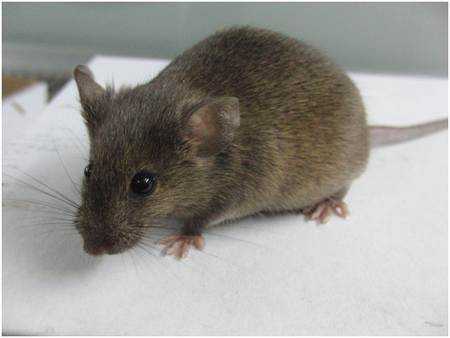Peking University, July 26, 2013: Recently, a research group led by Professor Deng Hongkui and Dr. Zhao Yang from Peking University (PKU) has announced their revolutionary results that a mammalian somatic cell can be reprogrammed to become pluripotent only by using a cocktail of four small molecule compounds, which has been published in Science Express.
The chemically induced pluripotent stem cells (CiPSCs) from mouse somatic cells were demonstrated to be similar to embryonic stem cells, the initial cells that have the potential to build the whole body’s organs, which holds promising perspective for the use in regenerative medicine.


The mouses in the lab – from neither fertilized eggs, nor embryonic stem cells, but CiPSCs
A mammalian cell only possesses pluripotency in its very early embryonic stage and gradually loses this potential along with the cell differentiation and maturation process during the journey of life. For decades, scientists are seeking for methods that can set back the developmental clock of a mature cell and reprogram it to become a pluripotent stem cell.
Previously, mammalian somatic reprogramming was demonstrated by using nuclear transfer into oocytes or by transgene strategies. Recently, The Nobel Prize in Physiology or Medicine 2012 was awarded for the discovery of these two approaches that enable somatic reprogramming.
Now, Deng’s finding shows that a chemical approach is sufficient to achieve this goal, which represents significant advances in somatic reprogramming and gets rid of the previous concerns in their further application, such as destroying human embryos or potential genetic mutation risks. This brand new method would provide an extremely easy and potentially safe strategy that is ideal for regenerative medicine, and would be a great leap forward to realize the blueprint of therapeutic cloning.
Moreover, it is somehow amazing that the developmental process of a cell can be turned back in such a simple manner. To understand the mechanisms, Deng’s team also revealed the molecular road map underlying the process of chemically induced somatic reprogramming, indicating that they had found a fundamentally novel way towards pluripotency.
These findings also have significant implications in understanding cell fate determination and the mechanism of cell fate conversion. It could be anticipated that in the future, cell fate could be manipulated directly by small molecules compounds, even in vivo, and thus cell functions can be restored directly by chemical drugs in the body. If these come true, new resolutions would be provided to cure diseases, which would transform the field of regenerative medicine.